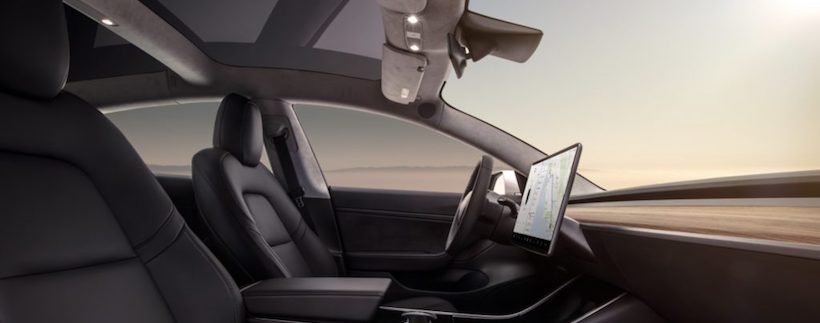- Consumer Reports reviewed Tesla’s Model 3 for the first time and the car did not earn its recommendation.
- The review was critical of the Model 3’s inconsistent braking, complex user controls, unsupportive rear seats, and highway noise.
- Elon Musk tweeted that the braking issues can largely be solved with firmware, software, or hardware updates (we think in the next year), at which point CR will retest the vehicle.
- While the CR review feeds into the “Tesla’s in trouble” narrative, the fact remains that Tesla has more demand than it can supply for the Model 3.
- Some perspective on the review’s tone is helpful, given Consumer Reports was also critical of the original iPhone.
- We continue to believe the Model 3 will represent the turning point in the world’s adoption of EVs.
Consumer Reports Model 3 review. The Model 3 failed to earn Consumer Reports recommendation based on concerns of inconsistent braking distances and complex user controls. In Consumer Reports’ test, the Model 3 took 152 feet to stop from 60 mph, almost 7 feet longer than it takes the Ford F-150 to stop. Car and Driver also noticed similar variability while testing Model 3 brake times. In Tesla’s own tests, stopping distances from 60 to 0 mph were an average of 133 feet. Musk also expects to be able to fix the problem via an over-the-air software update to the brake calibration algorithm, and added that Tesla, “will make sure all Model 3’s have amazing braking ability at no expense to customers.” Consumer Reports was also critical of the complex user controls, unsupportive rear seats, and excessive wind noise at high speeds. The report’s negative comments overshadowed an otherwise positive review, highlighted by the fact that the Model 3’s 350-mile range was the longest ever recorded in a CR test.
Consumer Reports on iPhone. Consumer Reports has been skeptical of other groundbreaking, mass market products before. When reviewing the original iPhone, for example, they mentioned characteristics that went on to be trivial. CR logged complaints about the inability to remove the battery, a headphone jack that required an adapter for non-Apple headphones, and said entering calendar appointments was not as easy as it was on a Blackberry. Complaints about the Model 3’s complex controls and the lack of buttons remind us of Steve Ballmer’s infamous take on the iPhone’s prospects because it did not have a keyboard.
The variation in braking distances is a serious issue that needs to be swiftly addressed. Consumer Reports’ director of automotive testing, Jake Fisher, said that an over-the-air improvement in braking performance would be an industry first, and if it was successful, CR would retest the Model 3. If Tesla is able to improve this metric, it may earn CR’s recommendation and demonstrate the power of over-the-air updates.
If Tesla accomplishes an over-the-air improvement in braking performance, it may earn CR’s recommendation and demonstrate the power of over-the-air updates.
If a hardware upgrade is necessary, it will add to the list of challenges Musk is facing, and feed into the “Tesla’s in trouble” narrative. We see this review as another speed bump on the Model 3’s path to transforming the industry and we remain optimistic about its ability to do so.
Disclaimer: We actively write about the themes in which we invest: virtual reality, augmented reality, artificial intelligence, and robotics. From time to time, we will write about companies that are in our portfolio. Content on this site including opinions on specific themes in technology, market estimates, and estimates and commentary regarding publicly traded or private companies is not intended for use in making investment decisions. We hold no obligation to update any of our projections. We express no warranties about any estimates or opinions we make.
